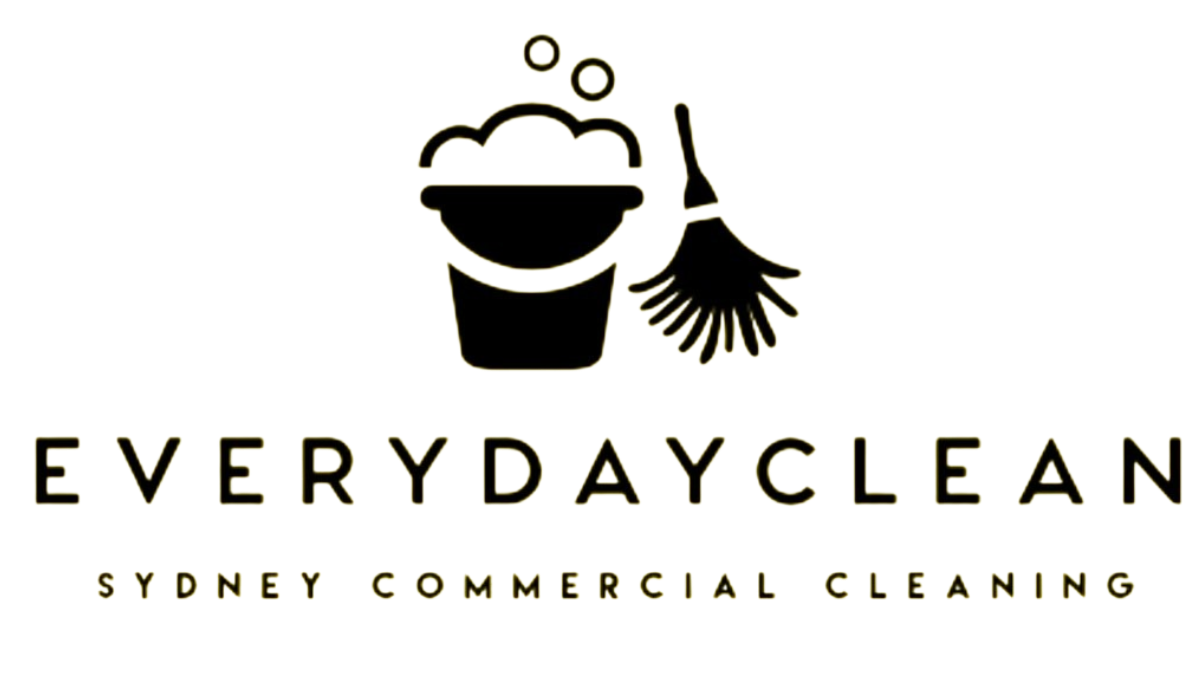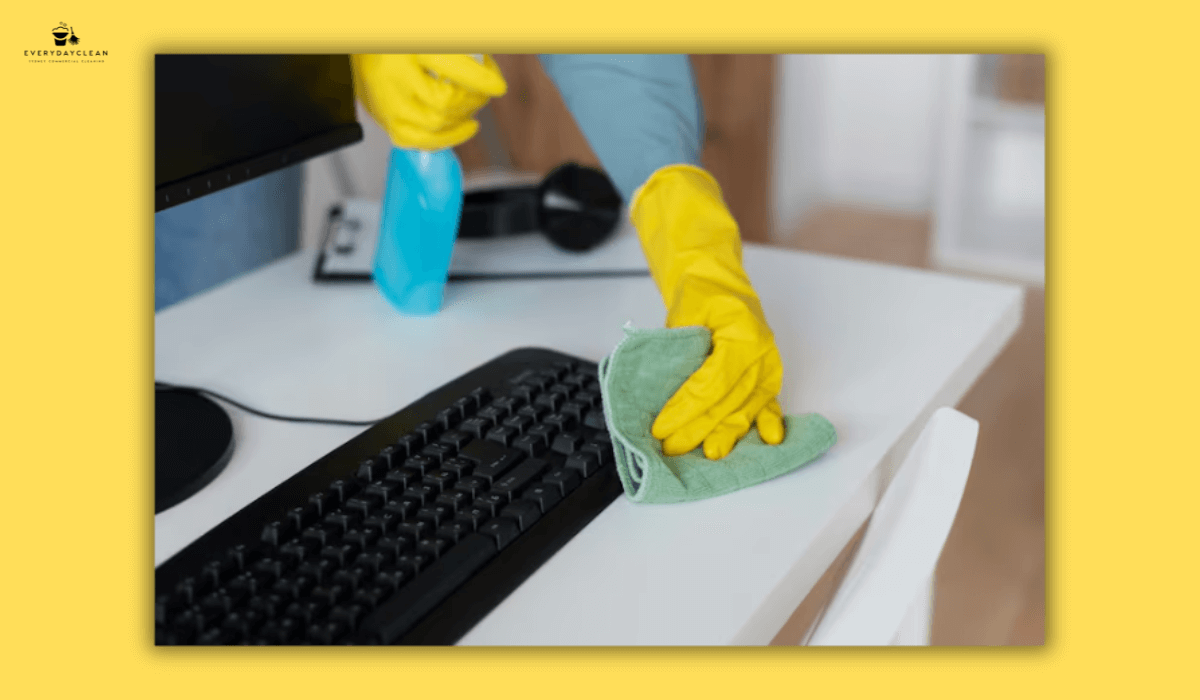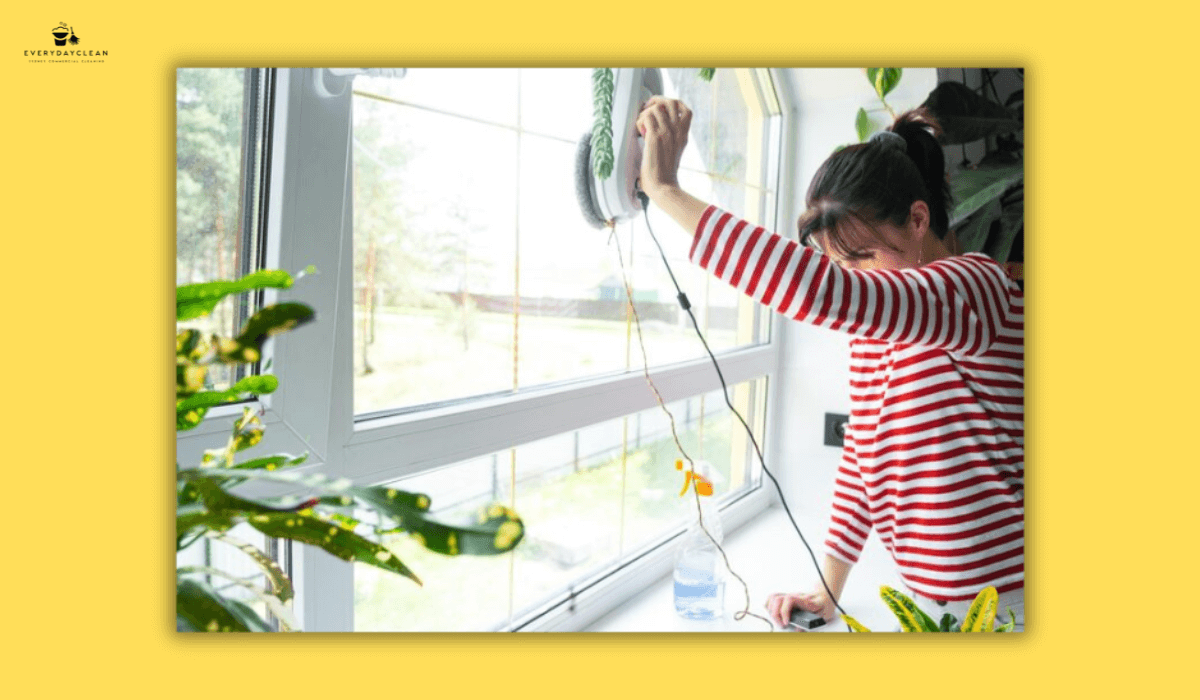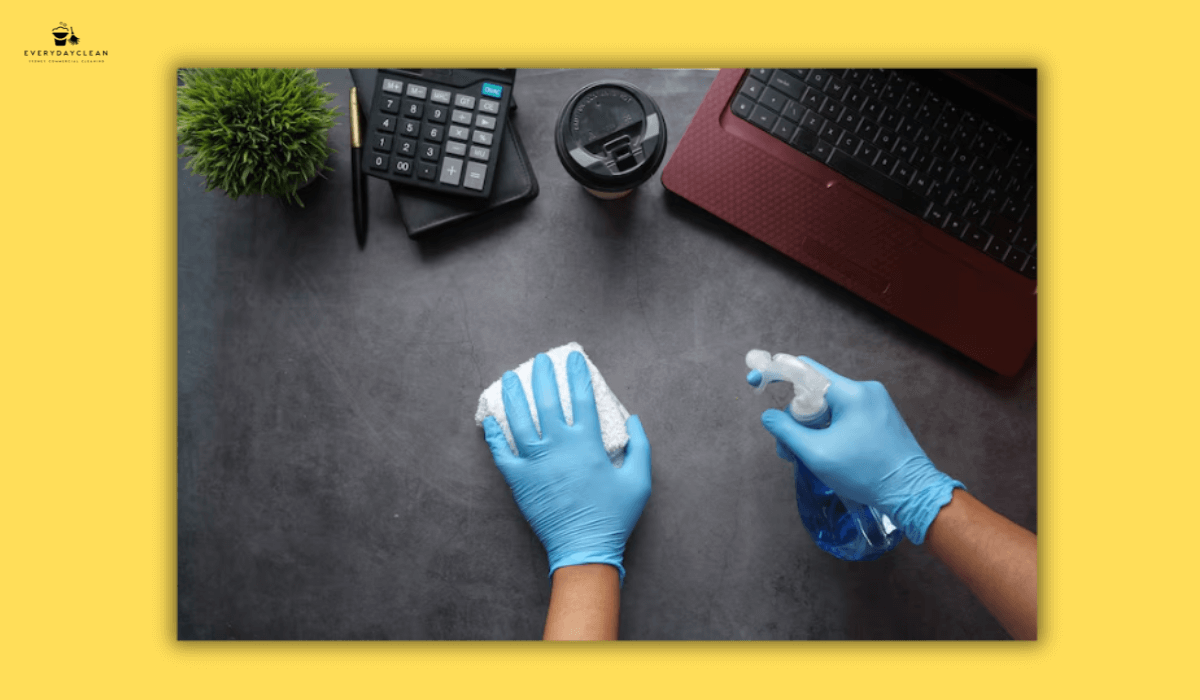20-Point Cleaning Checklist for Schools
A complete cleaning checklist for schools must ensure that every learning space, bathroom, hallway, and shared area is safe, sanitised, and consistently hygienic. Whether a school is managed by internal janitorial staff or an external provider, cleaning protocols must be aligned with government hygiene guidelines, risk-reduction strategies, and high-traffic school dynamics.
This detailed guide provides a classroom-first, hygiene-driven school cleaning checklist—including daily, weekly, and deep-clean tasks—for facilities teams, principals, and commercial cleaning companies serving Australian schools.
School Cleaning Checklist: Full Breakdown by Area
The following structured checklist focuses on essential cleaning zones within school environments, from classrooms and staff rooms to bathrooms and entryways.
Classroom Cleaning Checklist
Classrooms are where students spend most of their time, making them a critical zone for daily cleaning. Surfaces accumulate dust, allergens, and bacteria throughout the day, especially on shared desks, chairs, and whiteboards.
Daily tasks:
- Empty bins and replace liners
- Disinfect desks, chairs, and high-touch points (light switches, handles)
- Vacuum floors or mop (depending on surface)
- Dust window sills, ledges, and skirting boards
- Wipe whiteboards and sanitise markers
Weekly tasks:
- Spot-clean classroom walls
- Deep vacuum carpets with HEPA filters
- Clean and inspect air vents
- Wash fabric curtains (if applicable)
- Check for mould growth behind shelves or under windows
Toilet and Bathroom Cleaning Checklist
Toilets and student bathrooms must follow strict sanitation protocols to prevent odour, bacteria, and the spread of illness. These areas require more frequent and thorough attention.
Daily tasks:
- Clean and disinfect toilet bowls, seats, and flush buttons
- Refill soap, paper towel, and toilet paper dispensers
- Mop and sanitise floors
- Disinfect taps, sinks, mirrors, and stall locks
- Empty sanitary bins (where relevant)
Weekly tasks:
- Remove hard water stains from tiles
- Scrub and descale urinals
- Polish mirrors and stainless steel surfaces
- Check for plumbing leaks or blockages
- Clean ventilation grilles
Common Area Cleaning Checklist (Halls, Canteens, Offices)
Common zones often host foot traffic, food consumption, and visitor movement. These areas must be cleaned with high-frequency checklists and zone-based workflows.
Daily tasks:
- Vacuum or mop hallway and foyer floors
- Wipe reception counters and glass doors
- Disinfect canteen benches and food prep areas
- Sanitise staff room kitchens (microwaves, fridges, kettles)
- Clean handrails and balustrades
Weekly tasks:
- Steam-clean fabric furniture or upholstered chairs
- Dust ceiling fans and high windows
- Clean vending machines and water dispensers
- Wash canteen floors thoroughly
- Review pest control areas (especially near bins)
Entryways, Playgrounds & Outdoor Zones
These zones connect indoor and outdoor activity, often tracking dirt, debris, and allergens. They also present slipping hazards if not cleaned properly.
Daily tasks:
- Sweep entrances, ramps, and external corridors
- Mop wet areas or covered porches
- Disinfect door handles and push plates
- Clean hand sanitiser stations
Weekly tasks:
- Pressure-wash playground paths or rubber surfacing
- Clean exterior windows and noticeboards
- Check for cobwebs, nests, or insect buildup
- Rinse and sanitise bin areas
- Inspect and clean bike racks or lockers
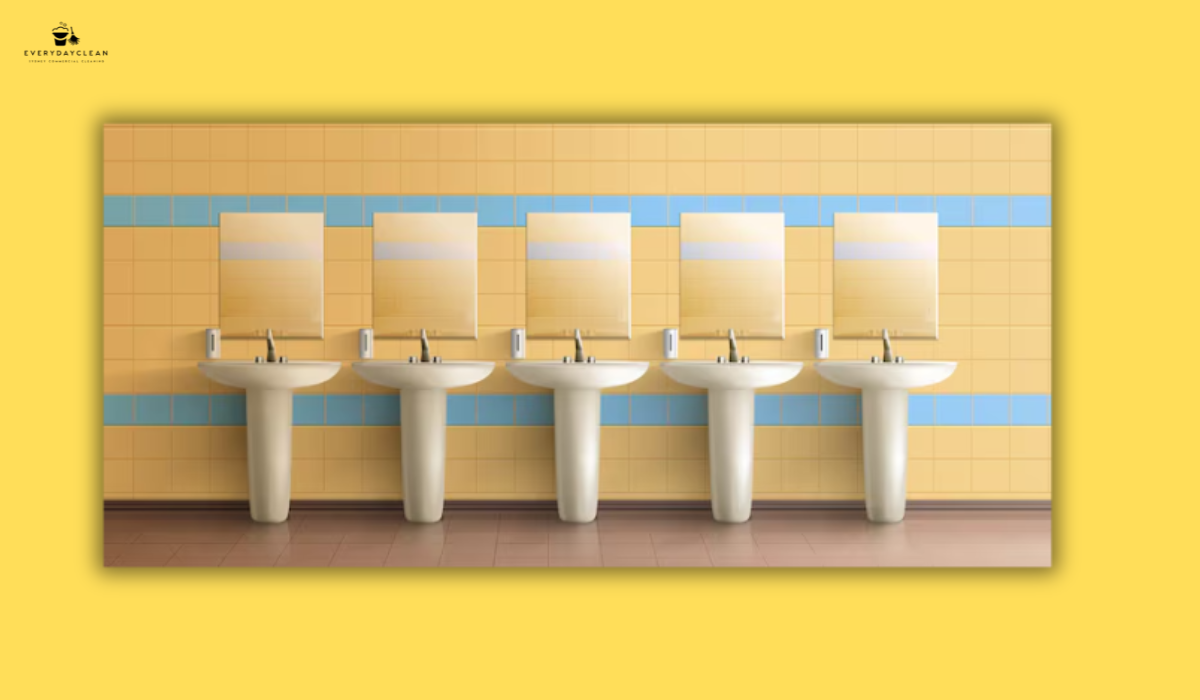
Deep Cleaning Schedule for Schools (Monthly & Term Breaks)
While daily and weekly tasks are vital, term-based deep cleans ensure long-term hygiene. These should be conducted during school holidays or professional development days to allow access to every zone.
Deep cleaning services should include:
- Machine scrubbing hard floors
- Steam cleaning carpets and upholstery
- Cleaning behind heavy furniture
- Disinfecting air conditioning vents
- Full washdown of walls and ceilings
- Sanitisation fogging (optional for high-risk zones)
- Restocking cleaning supply cabinets
Similar to protocols in assisted care, understanding the procedure to keep beds of disabled people clean offers useful parallels for deep cleaning and infection control in educational environments.
Choosing the Right Cleaning Products for Schools
School environments require products that are effective yet safe for children and staff with sensitivities. Products used should be low-VOC, non-toxic, and ideally certified by a reputable authority such as GECA (Good Environmental Choice Australia).
Recommended product types:
- Neutral pH floor cleaners – safe for sealed timber or vinyl
- Alcohol-based disinfectants – fast drying for surfaces
- Enzymatic toilet cleaners – for odour and biological residue
- Microfibre cloth systems – colour-coded for zone separation
- Hospital-grade disinfectants – used sparingly in high-risk areas
Ventilation and Air Quality Hygiene
Ventilation plays a critical role in school cleaning. Dust buildup in vents and poor airflow can circulate pathogens, allergens, and odours throughout classrooms.
Ventilation hygiene checklist:
- Clean HVAC filters every 1–2 months
- Vacuum air vents with HEPA vacuums
- Wipe around ceiling fans and extractor grills
- Ensure windows open easily for passive ventilation
- Install air purifiers in high-occupancy areas
Staff Room & Admin Office Cleaning Best Practices
While not student-facing, these areas contribute to staff morale and safety. Often overlooked, their hygiene impacts school-wide standards.
Checklist items:
- Disinfect desks, phones, and keyboards daily
- Clean inside fridges and dishwashers weekly
- Vacuum or mop behind filing cabinets monthly
- Sanitise printers, touchscreens, and communal devices
- Deep clean rugs, mats, and upholstered staff chairs
In educational facilities like primary schools and childcare centres, partnering with trusted
child care cleaning services ensures consistency and safety beyond just the classroom.
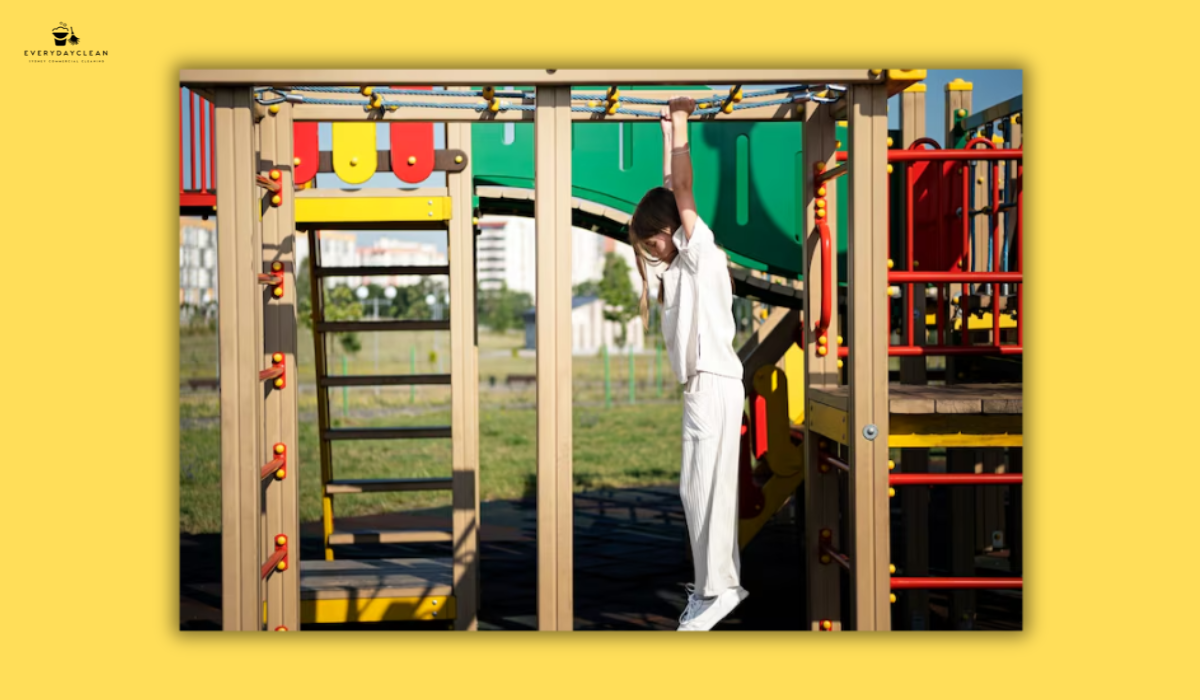
FAQs About School Cleaning Routines
To clarify common questions from school leaders and facilities staff, here are answers based on the most frequently searched queries in Australia and internationally.
How often should school toilets be cleaned?
Toilets in schools should be cleaned at least once per day, with high-use toilets cleaned twice daily or between breaks. Frequent disinfection of touchpoints like flush buttons, taps, and stall locks is essential to reduce the spread of illness. During flu season or outbreaks, increase cleaning frequency and include after-lunch spot checks.
What is the best time to clean classrooms?
The best time to clean classrooms is after school hours, when students have left and cleaners have uninterrupted access. This allows for thorough surface disinfection, floor vacuuming, and bin emptying, and allows disinfectants adequate dwell time. Morning touch-ups can be done before school resumes, especially on desks or high-touch points.
What should be included in a school cleaning checklist?
A comprehensive school cleaning checklist includes:
- Daily tasks for classrooms, bathrooms, and common areas
- Weekly deeper maintenance tasks
- Monthly or term-based deep cleaning
- Outdoor cleaning for playgrounds and entryways
- Safe cleaning product use protocols
- Ventilation and air hygiene practices
Checklists should be customised based on school size, student age group, and whether the school operates year-round.
Are commercial cleaners required for schools?
While some schools use internal cleaning staff, commercial cleaners are often engaged for their efficiency, compliance knowledge, and access to specialised equipment. Commercial cleaners can manage term deep cleans, chemical-safe product handling, fogging, and high-area sanitisation that in-house teams may not be trained for.
Professional Cleaning for Australian Schools
Ensure your school stays compliant, spotless, and safe with help from Everyday Clean’s specialised school cleaning services. Whether it's daily classroom upkeep, holiday deep cleans, or full checklist-based sanitisation, our Sydney-based team uses eco-safe, child-friendly solutions tailored to your school environment.
Author: Everyday Clean Content Team
Everyday Clean is Sydney’s trusted provider of commercial cleaning solutions, including schools, offices, gyms, and childcare centres. Our licensed professionals use advanced, eco-friendly equipment to deliver safe, compliant, and spotless results across all facilities. With deep experience in the education sector, we help schools maintain hygienic, student-ready environments that staff and families trust.
